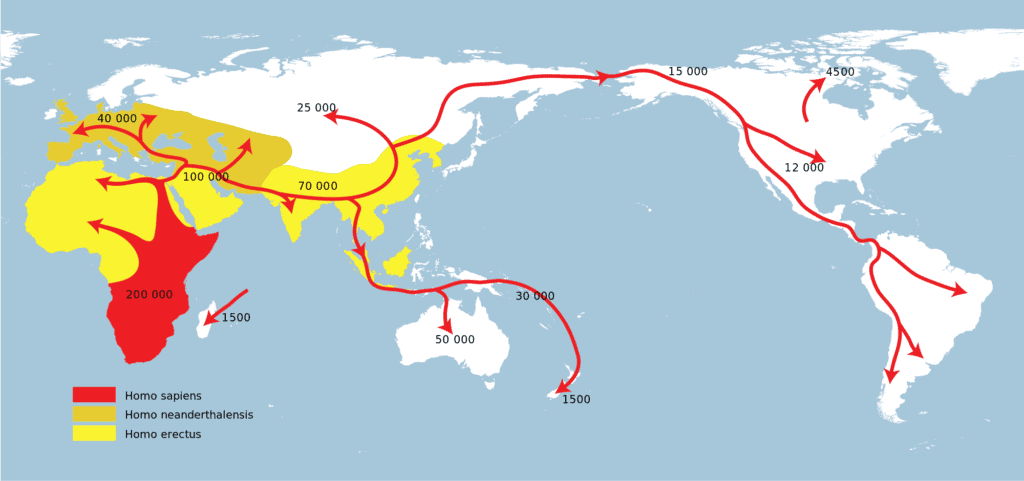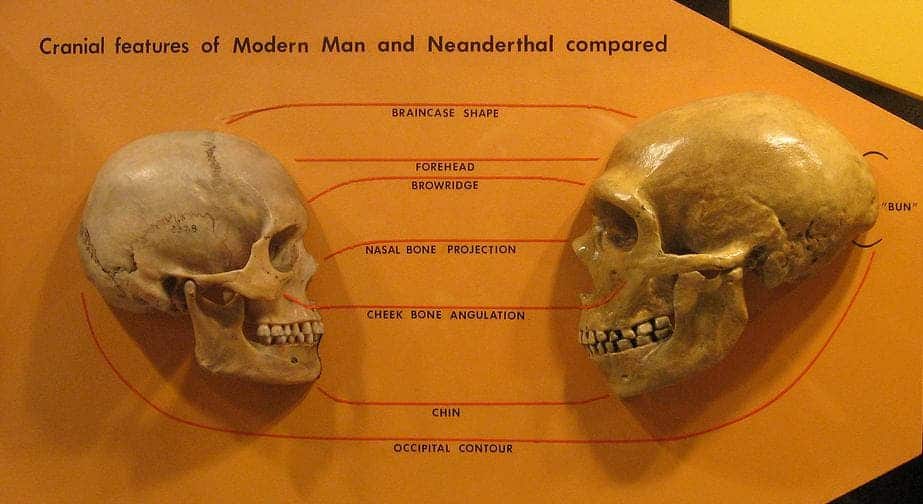Neanderthals lived at the same time as early humans. They were strong, smart, and in many ways better than their counterparts. Yet humans endured, while Neanderthals went extinct (though in a way, we still carry them around through our DNA). So what killed them?

The extinction of the Neanderthals is a long debate which won’t end anytime soon. This new study doesn’t try to explain if the main culprit was climate change, epidemics, or the inability to compete with humans. Instead, it argues that Neanderthals were doomed to fall either way.
Oren Kolodny of Stanford University approached his colleague Marcus Feldman. Together, they carried out a computer simulation that represented small bands of Neanderthals and modern humans in Europe and Asia. They then sent these populations randomly into extinction, regardless of whether they were Neanderthals or humans. Neither of the populations was considered to have an advantage over the other. However, there was one small, but extremely important difference.
While Neanderthal populations were generally stable, human populations had a small trickle of reinforcements coming in from Africa. This small number of extra bands of humans coming in was enough to tip the balance in the favor of humans.
The computer model is consistent with the anthropological evidence. Neanderthals first emerged in Europe around 400,000 years ago. Sometime between about 51,000 and 39,000 years ago, humans and Neanderthals shared the same landscape. They may have fought and competed for the same resources, they may have gotten along well, and they certainly interbred. When it was all said and done, humans survived, while Neanderthals didn’t. It’s a simple ecological principle: two different species can’t survive occupying the exact same niche at the exact same time. So it’s safe to assume that the former had some kind of selective evolutionary advantage over the latter. But what was it?

It’s hard to assume what that advantage was, especially as the environmental conditions at the time weren’t precisely known. So Kolodny and Feldman tried to establish a simple model, without any hard-to-prove claims. They ran their simulation more than a million times, changing different assumptions and variables, but almost every time, Neanderthals slowly faded away — all due to the extra migration coming in from Africa.
If survival was a game of chance, “it was rigged by the fact that there’s recurring migration,” Kolodny said. “The game was doomed to end with the Neanderthals losing.”
“We have also demonstrated that even if bidirectional migration between Europe and Africa had occurred, [modern humans] would have been extremely likely to eventually replace Neanderthals, given the estimated differences in population size between the species, in favor of [modern humans].”
This seems to indicate that humans weren’t necessarily better than Neanderthals at any given task — they simply survived by migrating more. This is consistent with previous studies based on physical evidence. These studies found that humans and Neanderthals were much more similar than previously believed.
‘It confirms the so-called “null hypothesis” — based solely on we know about humans and Neanderthals, and considering that the two populations are similar, we can say that Neanderthals were very likely to fail even in the absence of decisive enviromental changes.
However, it’s important to note that this study is suggestive, not conclusive, Kolodny cautioned. However, it does suggest that even without climate change or another environmental change, mankind still would have won the species war.
“Even if there were no selection and no climate change, the end result would have been the same. It’s a subtle distinction but it’s important,” Kolodny concludes.
Journal Reference: Oren Kolodny et al. A parsimonious neutral model suggests Neanderthal replacement was determined by migration and random species drift, Nature Communications (2017). DOI: 10.1038/s41467-017-01043-z .


